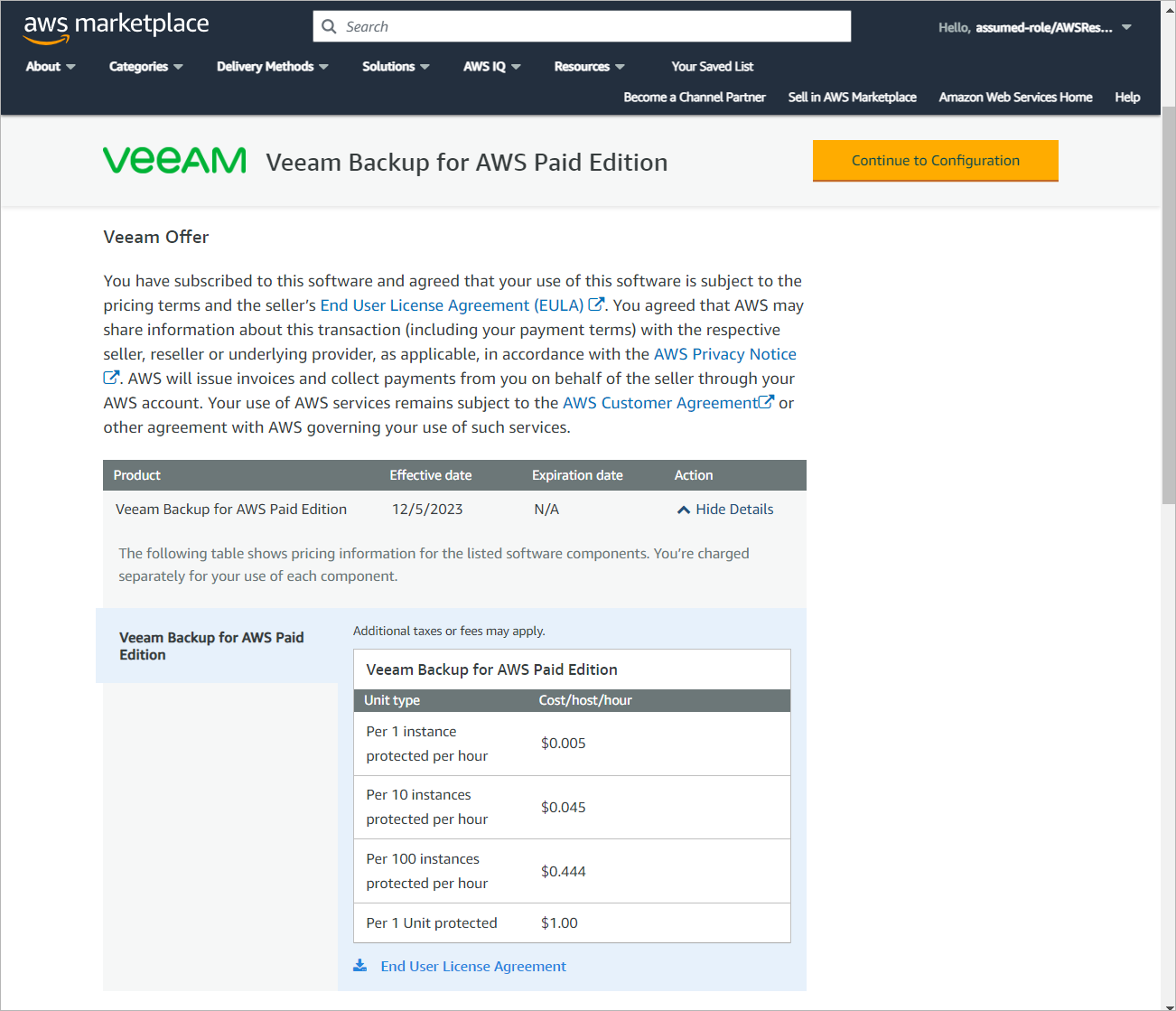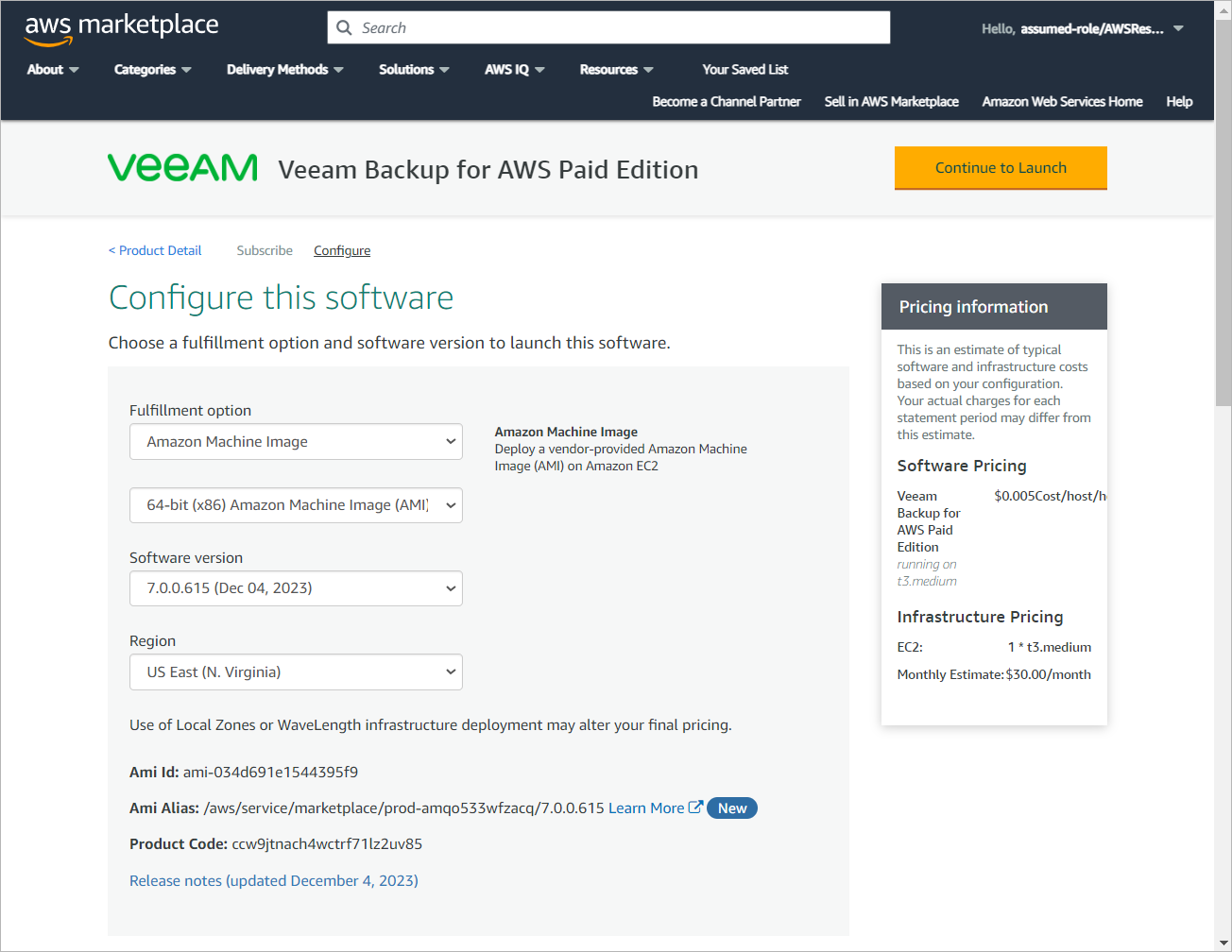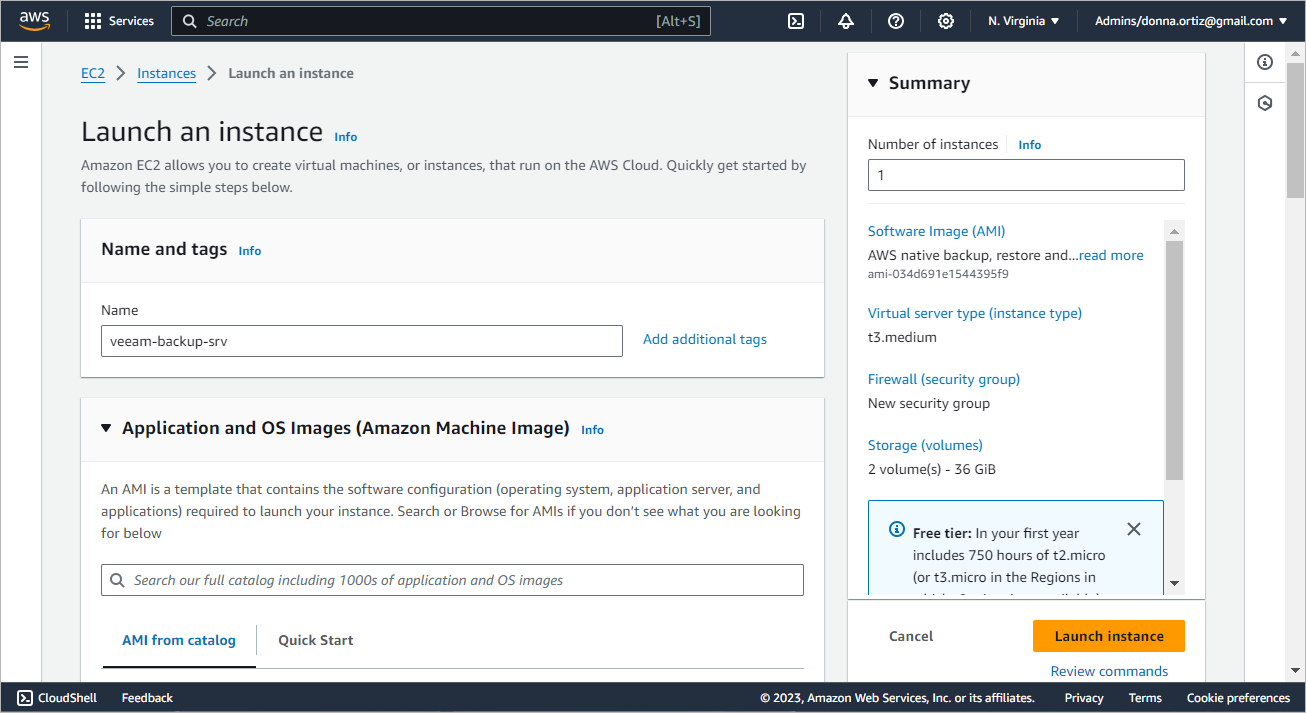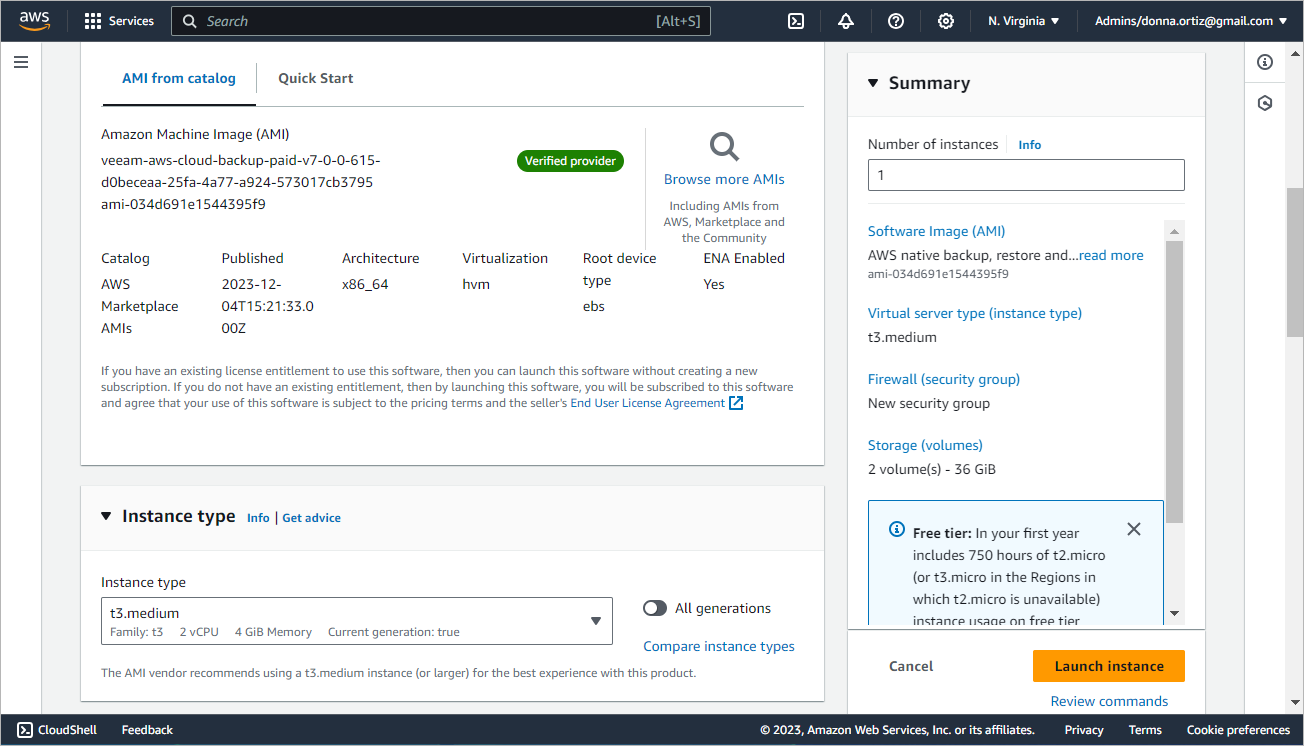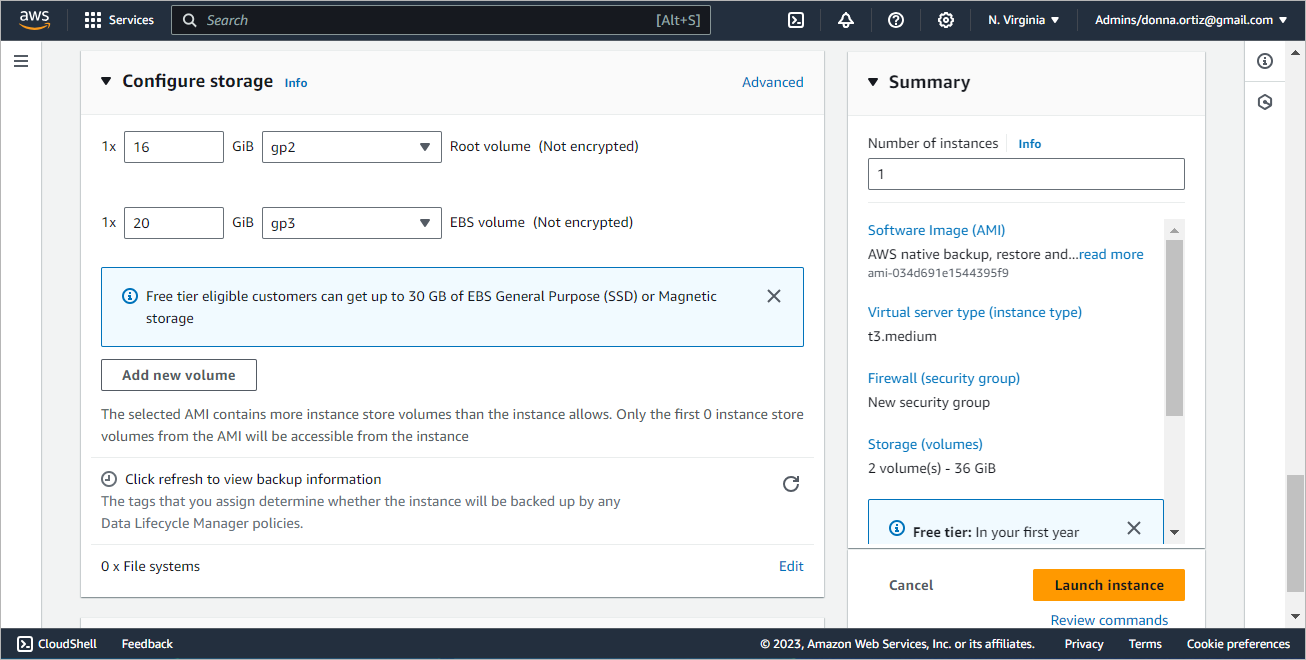Installing Veeam Backup for AWS from AMI
Veeam Backup for AWS is installed on a single EC2 instance. The EC2 instance is created during the product installation.
Important |
After you install Veeam Backup for AWS from the Amazon Machine Image (AMI), you will be asked to provide one-time access keys of an IAM user that Veeam Backup for AWS will use to create IAM roles required for the backup appliance configuration. If you do not want to provide the keys, you can create the required IAM roles manually before you begin the installation. For more information on the required IAM roles, see Required IAM Permissions. |
To install Veeam Backup for AWS from an AMI:
- Log in to AWS Marketplace using credentials of an AWS account in which you plan to install Veeam Backup for AWS.
Important |
Do not use the root user for login when deploying Veeam Backup for AWS. Deployment or operation of Veeam Backup for AWS does not require the use of root privileges for the AWS account. |
You can install Veeam Backup for AWS in the production site — in the AWS account where resources that you plan to back up reside. It is recommended, however, that you use a separate AWS account for Veeam Backup for AWS installation. In this case, if a disaster strikes in the production site, you will still be able to access Veeam Backup for AWS and perform recovery operations.
- Open the Veeam Backup for AWS overview page for the necessary product edition:
For more information on product editions, see Licensing of Standalone Backup Appliances.
- Click Continue to Subscribe.
- On the Subscribe to this software page, read the product license agreement and click Continue to Configuration.
To view the license agreement, expand the details in the Terms and Conditions section and click End User License Agreement.
- On the Configure this software page, configure installation settings:
- From the Fulfillment option drop-down list, select Amazon Machine Image.
- From the Software Version drop-down list, select the latest version of Veeam Backup for AWS.
- From the Region drop-down list, select an AWS Region in which the EC2 instance running Veeam Backup for AWS will reside.
For more information on AWS Regions, see AWS Documentation.
- Click Continue to Launch.
- On the Launch this software page, do the following:
- In the Configuration Details section, review the product installation settings.
- From the Choose Action drop-down list, select Launch through EC2.
- Click Launch. The Launch an instance wizard will open.
- At the Name and tags step of the wizard, you can specify a name that will help you easily identify and locate the appliance and AWS tags that will be assigned to the instance.
- At the Instance type step of the wizard, select an EC2 instance type for the backup appliance. The minimum recommended EC2 instance type is t3.medium.
- At the Key pair (login) step of the wizard, specify a key pair that will be used to authenticate against the backup appliance. You can select an existing key pair or create a new one.
For a key pair to be displayed in the Key pair name drop-down list, it must be created in the Amazon EC2 console. To learn how to create key pairs, see AWS Documentation.
- At the Network settings step of the wizard, do the following:
- Click Edit.
- In the Network and Subnet fields, specify an Amazon VPC and subnet to which the backup appliance will be connected. You can either select an existing Amazon VPC and subnet, or create a new subnet.
For more information on Amazon VPCs and subnets, see AWS Documentation.
Important |
Consider the following:
To learn how to enable internet access for Amazon VPCs and subnets, see AWS Documentation. |
- From the Auto-assign Public IP drop-down list, select Enable.
If you want the backup appliance to be deployed without a public IP address, you will have to manually configure access both to the AWS services and the internet in the way that suites your security concerns best. For more information, see Backup Appliances in Private Environment.
- Choose a security group that will control the inbound and outbound traffic for the backup appliance. You can either associate an existing security group with the backup appliance or create a new security group. If you choose an existing security group, make sure it allows access to AWS services listed in the AWS Services section.
If you choose to create a new security group, add a new inbound rule for the HTTPS traffic:
- In the Inbound security groups rules section, click Add security group rule. The Security group rule 2 settings will appear.
- Select HTTPS from the Type drop-down list.
- Select Custom from the Source type drop-down list.
- In the Source field, specify IPv4 address ranges from which Veeam Backup for AWS Web UI will be accessible.
Make sure the IPv4 address of the local machine from which you plan to access Veeam Backup for AWS lies within the specified IPv4 ranges.
IPv4 address ranges must be specified in the CIDR notation (for example, 12.23.34.0/24). To allow unrestricted access to the backup appliance, you can specify 0.0.0.0/0. However, the latter is not recommended since unrestricted access to Veeam Backup for AWS can violate your organization security policy.
- At the Configure storage step of the wizard, review the preconfigured storage settings and proceed to the next step. For technical reasons, it is not recommended to change these settings.
The EC2 instance will be created with 2 gp3 volumes attached — the root volume with 16 GB of storage capacity and an additional EBS volume with 20 GB of storage capacity. The second volume is intended for storing Veeam Backup for AWS configuration database.
Tip |
To prevent runtime issues caused by multiple concurrent operations running on the backup appliance, you can later attach an additional EBS volume to the backup appliance and allow the system to allocate its resources in case of memory shortage. For more information, see Appendix D. Enabling Swap Partition. |
- At the Advanced details step of the wizard, do the following:
- [Applies if you have created IAM roles required for the product installation beforehand] In the IAM instance profile field, specify the Impersonation IAM role that will be attached to the backup appliance. This role will allow Veeam Backup for AWS to assume IAM roles to perform backup and restore operations.
- Enable access to the instance metadata to allow Veeam Backup for AWS to use the Instance Metadata Service (IMDS) to be able to configure and manage the running backup appliance. To do that, select Enabled from the Metadata accessible drop-down list.
- Configure additional settings for the backup appliance to meet your organization requirements. To learn how to configure Amazon Linux instances, see AWS Documentation.
- In the Summary section, review the configured settings and click Launch instance.
Right after installation, you must perform a number of additional actions for the backup appliance configuration. For more information, see After You Install.

